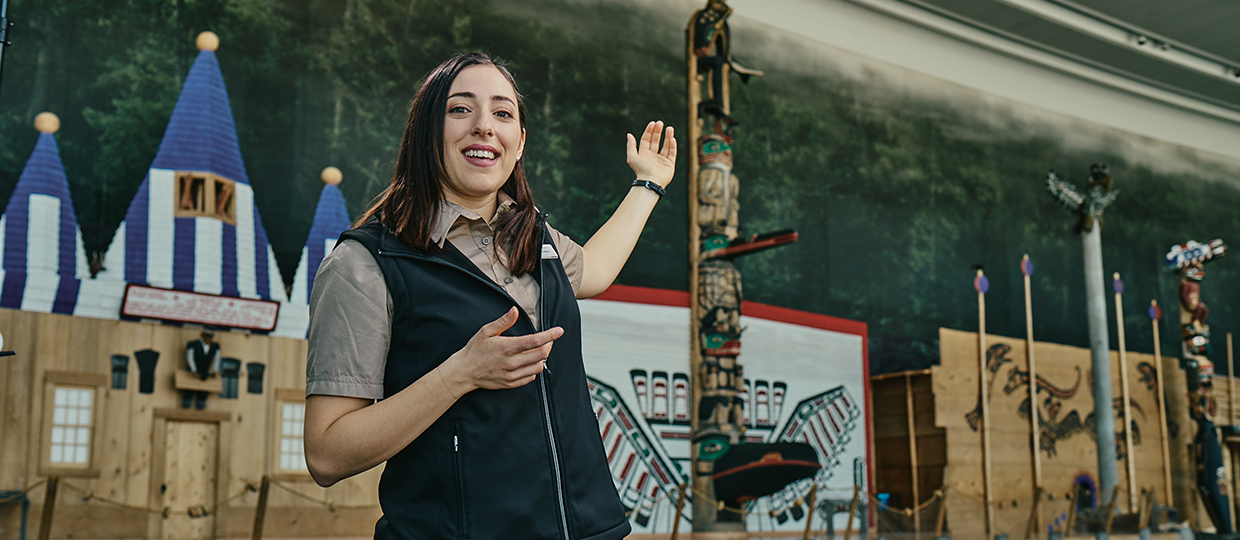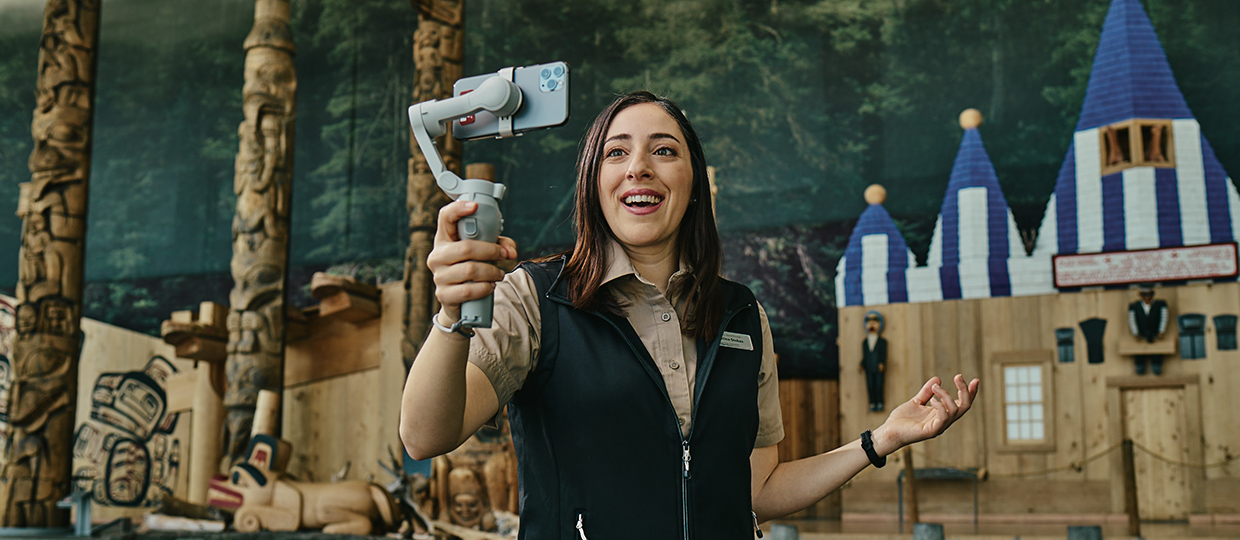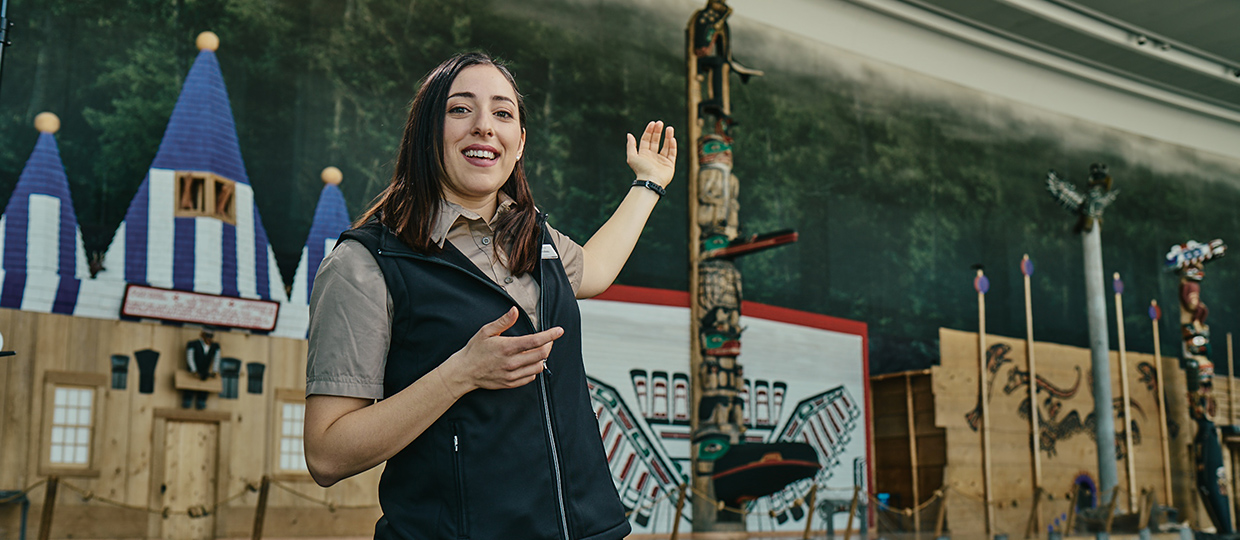The Canadian Museum of History’s virtual school programs are live and interactive. They are available to groups learning either in the classroom or on personal computers.
All programs are delivered by a member of our staff using the Zoom platform.
The Canadian Museum of History is pleased to announce that the virtual school programs are available to schools across Canada. Thanks in large part to the generosity of donors, the programs will be offered free of charge for the upcoming school year.
Program descriptions

First Peoples of the Northwest Coast
Explore the iconic art and cultural practices of the First Peoples of the Northwest Coast in an engaging PowerPoint presentation of the Museum’s Grand Hall.
Introduce your students to the iconic art and cultural practices of the First Peoples of the Northwest Coast. As they discover the Museum’s spectacular Grand Hall, students will learn about the significance and symbolism of entrance poles, explore house fronts created by six different First Nations, and examine traditional objects such as woven baskets. This engaging program ends with a video presentation by award-winning Haida weaver Ariane Medley, who shares her personal connection to the Museum and its collection.
Register for the First Peoples of the Northwest Coast program

Highlights of the Grand Hall
Explore stunning works of art by Indigenous artists Alex Janvier and Bill Reid, and learn more about the traditions of the First Peoples of the Northwest Coast.
Take your students on an engaging interactive tour of the Museum’s Grand Hall. Your journey begins with a stop at artist Alex Janvier’s dazzling ceiling painting, Morning Star, followed by a look at the mythical figures crowded into Bill Reid’s sculptural masterpiece, the Spirit of Haida Gwaii. Students will also be introduced to the art and cultural practices of the First Peoples of the Northwest Coast, as they explore entrance poles and six Indigenous house fronts, and examine baskets and hats woven by Indigenous artists.
Best curriculum link is to increase students’ understanding of Indigenous cultural practices and the importance of the transmission of traditional knowledge. Together, these practices emphasize the strong connection Indigenous Peoples have to the land.
